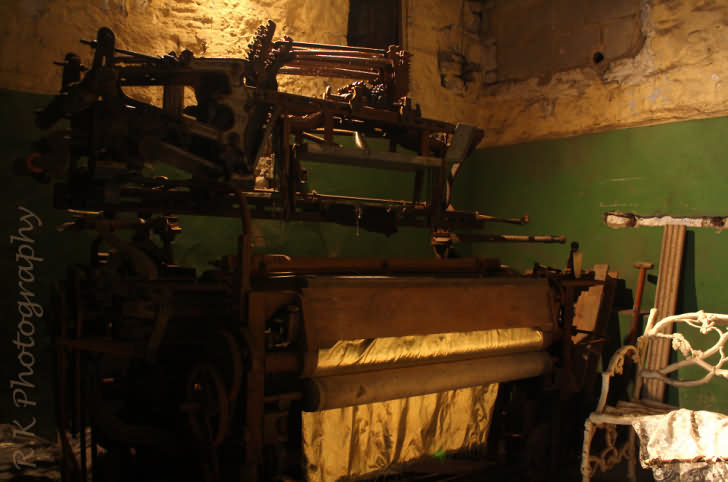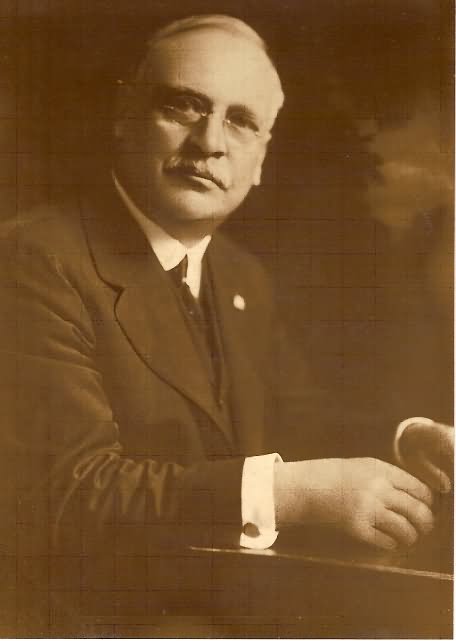Lothersdale Mill – Historical Textile Mill on the Pennine Way in the Yorkshire Dales

History of Lothersdale Mill on the Pennine Way in Yorkshire
History of Lothersdale Waterwheel
The Waterwheel at Dale End Mill, Lothersdale, North Yorkshire
Ancient Monument 1102
The march of the Industrial Revolution was dependent on how successful men were in wresting power from nature. Man's first escape from the tyranny of dependence on human or animal muscle power was the use of falling water to turn machinery.
Use of Water Power in Lothersdale dates back to Sixteenth Century
This technology was used by the Romans in Britain but in common with most sites in the North of England, the use of water power in Lothersdale can be traced back with certainty only as far at the late sixteenth century.
In 1603 George Tillotson was paying George, Earl of Cumberland, one noble (33p) a year for the use of a corn mill at Lothersdale.
This mill was a far smaller structure than the present building and ground locally produced corn for the inhabitants of the surrounding hills.
Lothersdale Mill converted by Thomas Parker from milling corn to textiles in Eighteenth Century
By the end of the eighteenth century corn grinding was becoming uneconomical at Lothersdale Mill. The invention of the water frame and associated textile machinery by Richard Arkwright gave a new use for the power from the old mill.
In 1792 Thomas Parker, an eighteen year-old youth from Appletreewick, realised the potential. In company with three partners he converted the mill from corn-grinding to textile manufacturing.
Water Mills & Manufacturers – Stanley Challenger Graham
In 1792 Lothersdale Mill was built on the site of a corn mill in 1792 by Chippendale Parker and Co. Partners were Thomas Chippendale of Skipton, Dr Wigglesworth of Cononley. Edmund Spencer of Cononley. Richard Croasdill of Marton Scar.
The mill and waterwheel were insured for, £700. Machinery £500. Stock £300. The insured value reduced to £1000 in 1795.
The partnership dissolved in 1798. Thomas Parker bought some of the partners shares and married Dr Wigglesworth's niece Ann Balme.
Lothersdale Mill converted to worsted spinning
On 1st April 1822 their daughter married John Wilson [1797-1868] from Scotland who took control. In 1835 went over to worsted spinning.
John Wilson went over the hill to Kelbrook and persuaded John Riddihough, a warp dresser at Smallpages to come to Lothersdale.
1842 was a bad drought year and the mill was stopped for many days while water built up in the dams. This decided them to install an engine by Roberts of Nelson with an underground flue up the hillside and a detached chimney 15ft high.
Lotherdsale Mill was extended in 1850s
In the early 1850s the mill was extended, a larger waterwheel was built by Ellison of Eastburn foundry and a larger engine installed made by J Dixon of Keighley and a 90ft chimney built to serve a new boiler and economiser.
James Ellison improves and expands Lothersdale Mill in 1850
The venture prospered and Lothersdale Mill expanded until by 1850, even the improved wheel then in use proved inadequate to power the enlarged mill.
James Ellison of Eastburn was consulted and the outcome was the improvement of the water courses of the mill. This increased the fall of water and power available to power the textile machinery at Lothersdale Mill.
Forty-Five Foot Diameter Waterwheel at Lothersdale Mill – the Largest in the World
In order to obtain the maximum benefit from the new water-courses James Ellison designed and built the magnificent forty-five foot diameter suspension wheel in Lothersdale Mill which occupies the wheel chamber to this day.
Lothersdale Wheel is reputed to be the largest indoor water-wheel in the world. The wheel at Dale End Mill in Lothersdale represents the acme of the millwrights craft.
Factory Inspection of Lothersdale Mill in 1861 – Stanley Challenger Graham
In 1861, the returns for the Factory Inspector reveal:
- 9 Girls under 13 years
- 7 Boys under 13 years
- 18 Males between 13 and 18
- 34 Males over 18
- 84 Females over 13
- 190 Power Looms
- 113 Power Loom Weavers
- Also 1700 spindles, not recorded
Textile boom in 1870 – followed by slump by 1873
The Franco-Prussian War created a boom in the textile trade in 1870-1, but the inevitable slump which followed hit Wilson, Hall & Co. most severely.
Without the guiding hand of the "old man", the three younger men quarrelled and dissolved the partnership in 1873.
John Hall struggled on but Fred Wilson took over in 1879 when John ran out of money.
Lothersdale Mill between 1895-1903
The principal foremen at Dale End mill at Lothersdale were the Riddioughs, the Hills, and James Hartley Procter.
I don't know the later history but in 1983 June Barrow owned the mill which was non-textile. I believe the waterwheel is the largest indoor waterwheel in the world. In 2003 it is still intact.
Lothersdale Wheel provided power for 190 looms
Together with a small steam engine by Dixons of Keighley Lothersdale Waterwheel provided the power for 190 looms and 1700 spindles until it was taken out of use in 1932.
Lothersdale Mill – The American Connection
Some valuable information was received recently from Bill Orr the great-grandson of William Parker whose grandfather was the Thomas Parker who converted Lothersdale Mill from corn production to textiles in the eighteenth century.
William Parker, Senior – 1857 – 1923
William Parker was born June 15, 1857 in Lothersdale, West Riding of Yorkshire, England. He received a thorough education in cotton spinning in the mills of his older brother in England. He then moved to United States, where he became a pioneer in cotton manufacturing in the South.

Lothersdale Mill's American cousin – Mill No. 1, Cedartown Cotton Company
He engaged in cotton manufacturing in Columbus, Macon and New Orleans, and in 1895 came to Cedartown, Georgia and helped to organize Mill No. 1 of the Cedartown Cotton Company.
The Lothersdale story continues in Georgia USA
He afterwards, in company with Messrs. A.W. Birkbeck and M.O. Berry, built the Paragon Mill, which was bought in 1900 by the Cedartown Cotton & Export Co., and became Mill No. 2 of that company.
Standard Cotton Mills
Messrs. Parker, Birkbeck and Berry then organized the Standard Cotton Mills, of which he was President until his death.
He was an active worker in Cedartown and instrumental in locating some of the towns most valued industries there. He was a devoted member of St. James Episcopal Church and was active in the diocese.
William Parker Senior always remembered his roots in Lothersdale
An Englishman by birth, Parker always maintained his allegiance to that country, and when war was declared between Great Britain and Germany he wrote to offer his services.
One of his cherished possessions was the letter of appreciation, which he received in reply, declining his offer on account of his age.